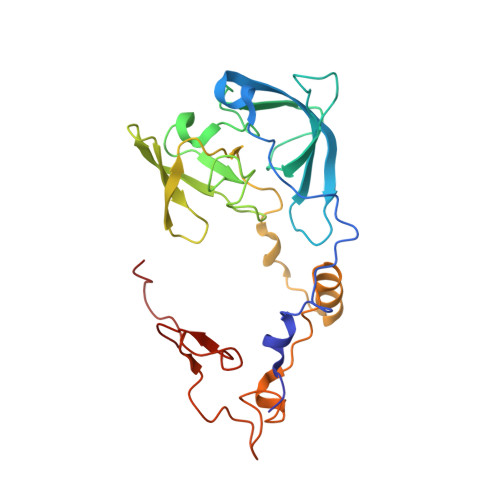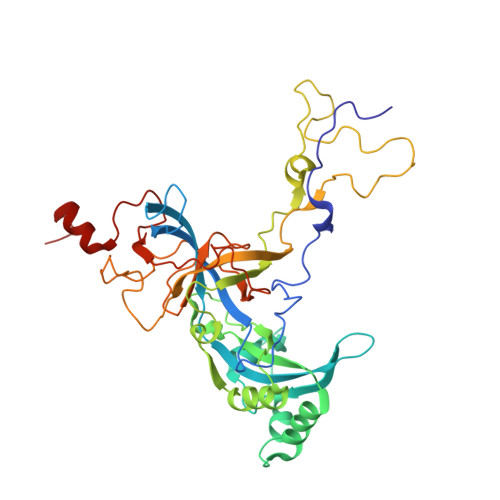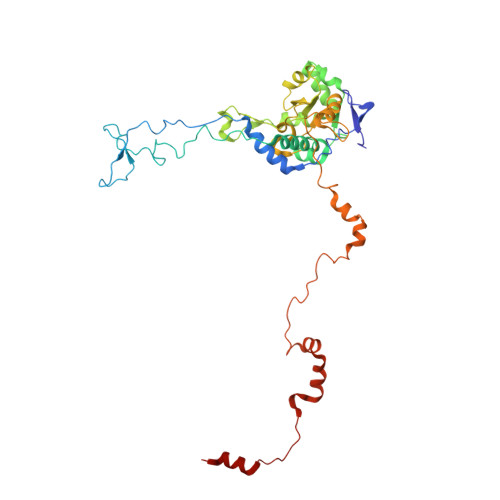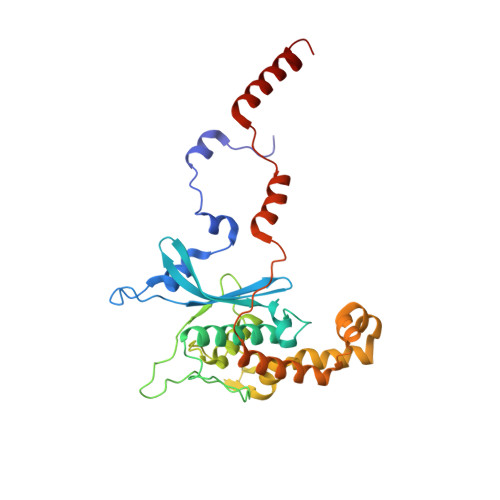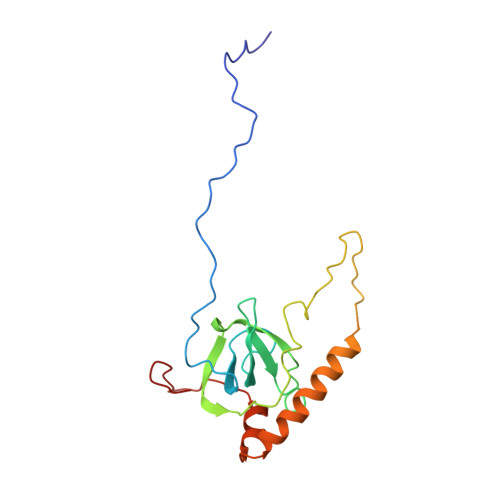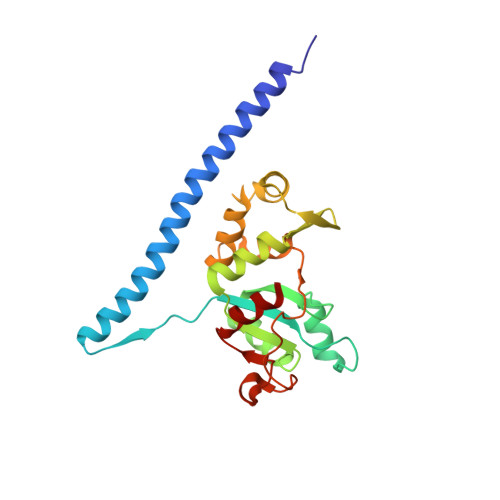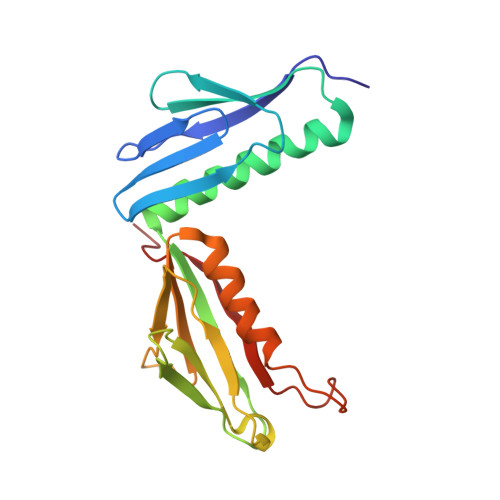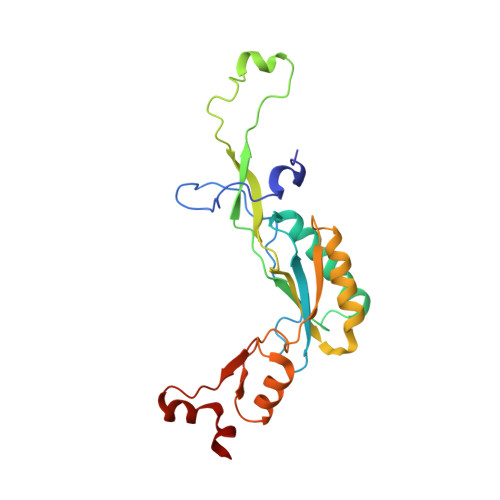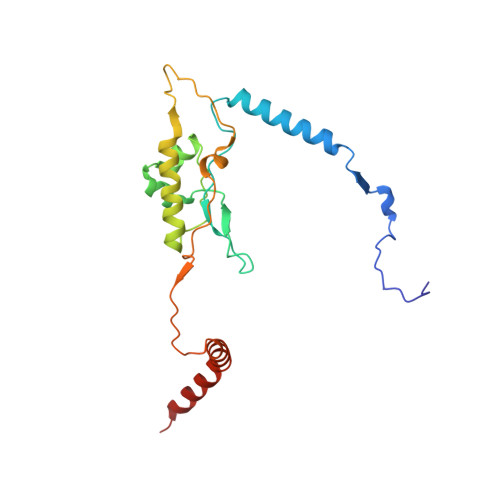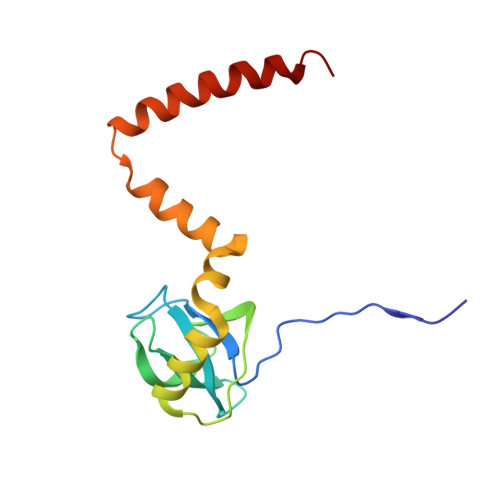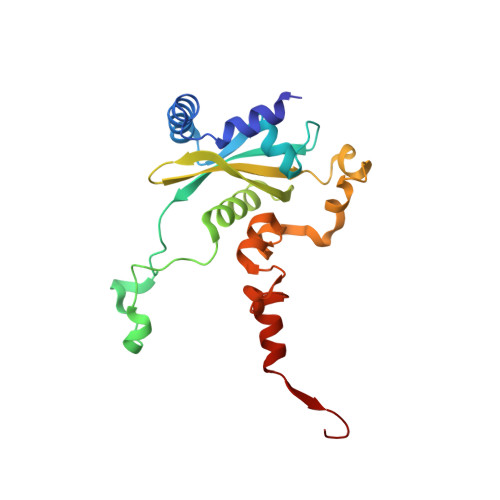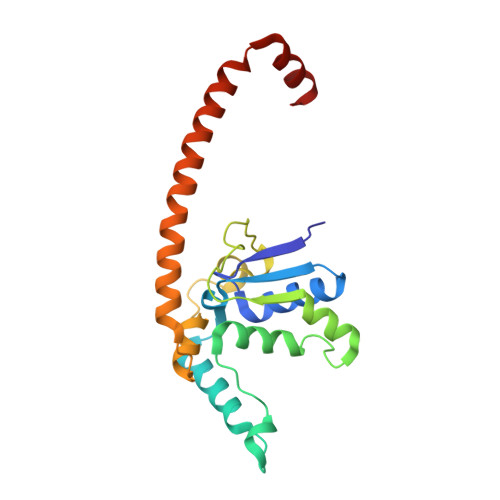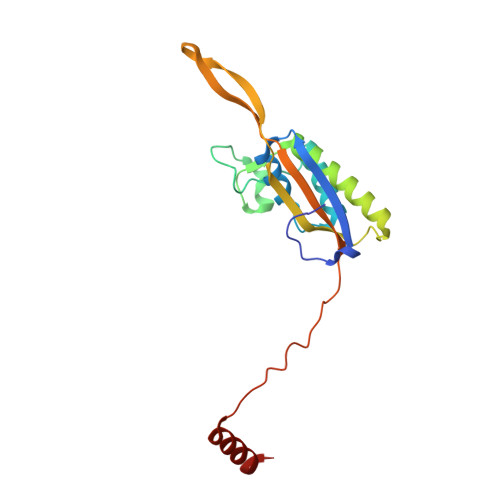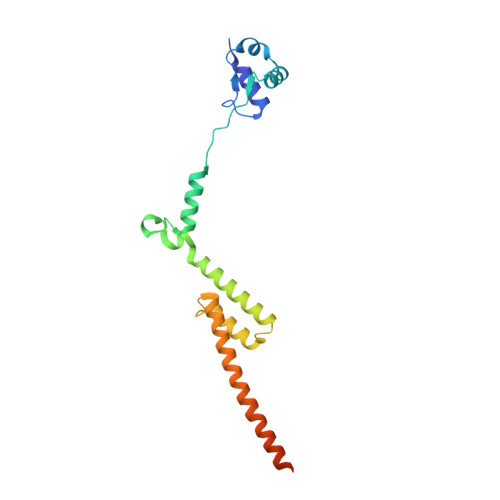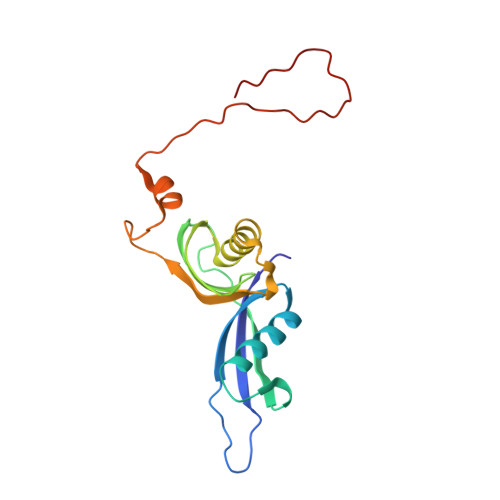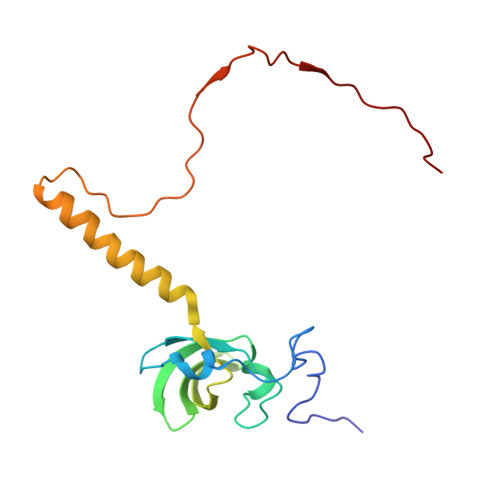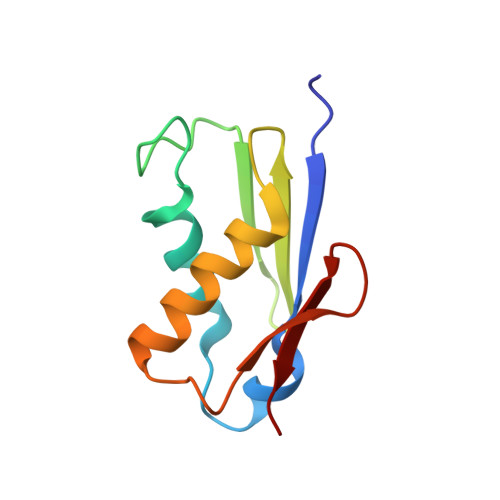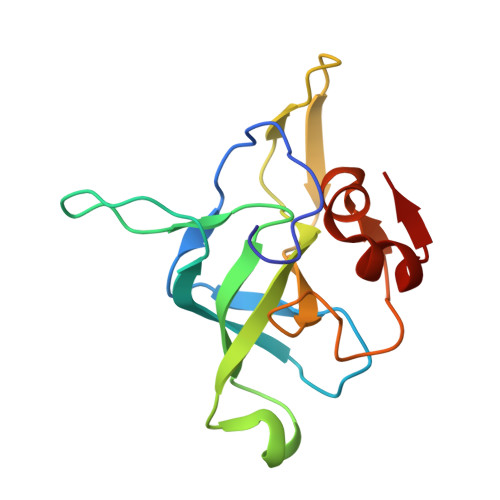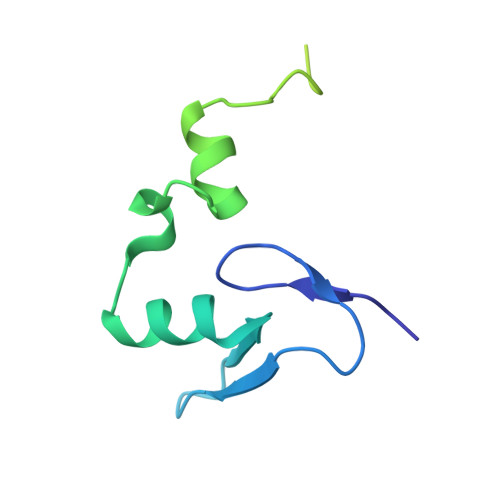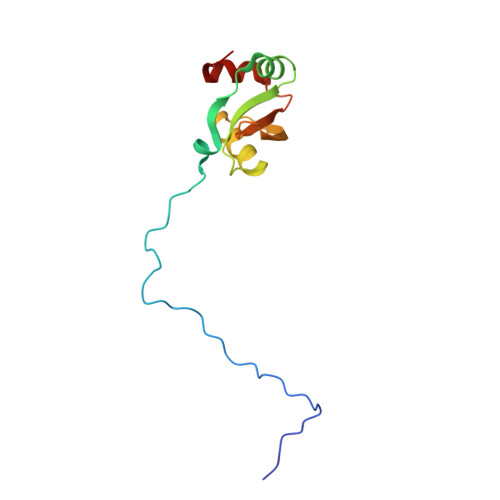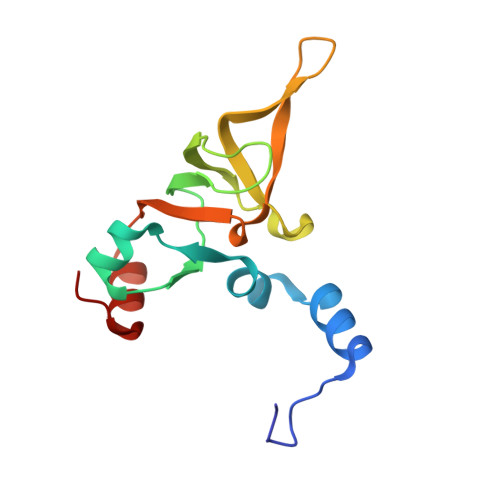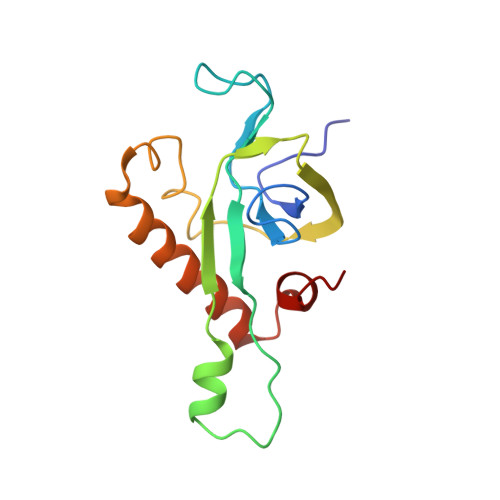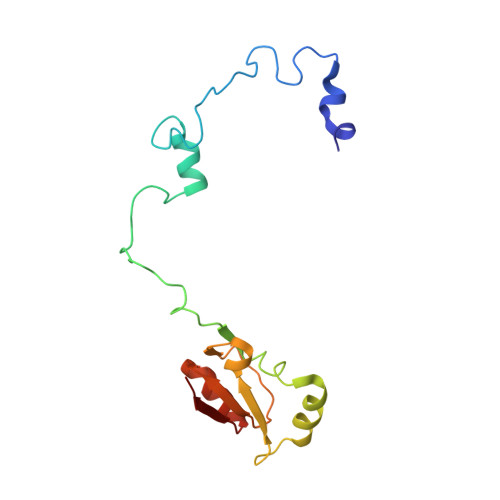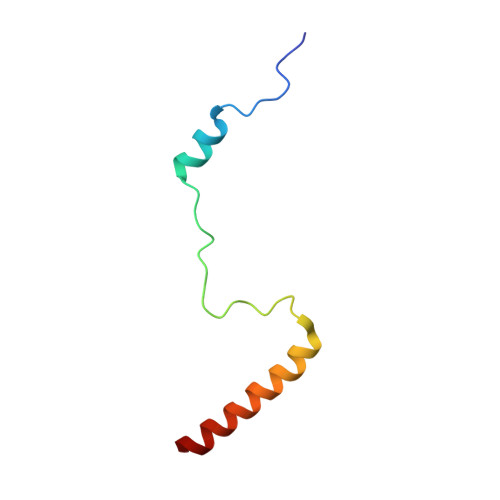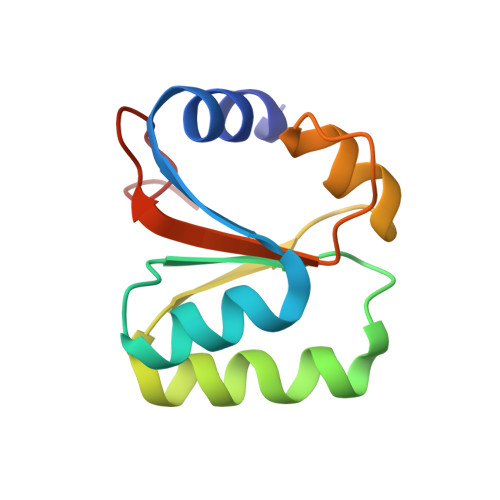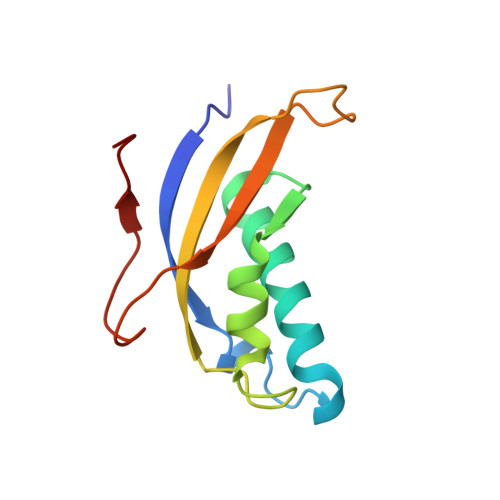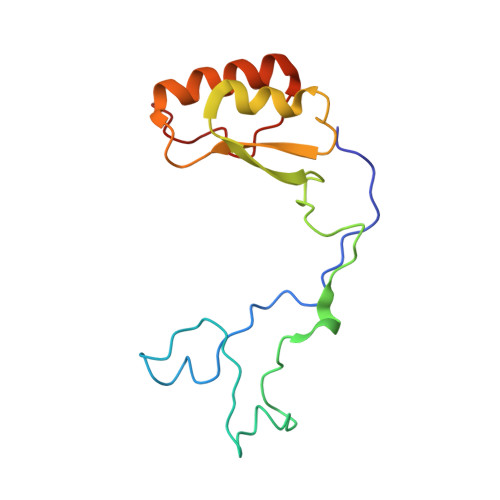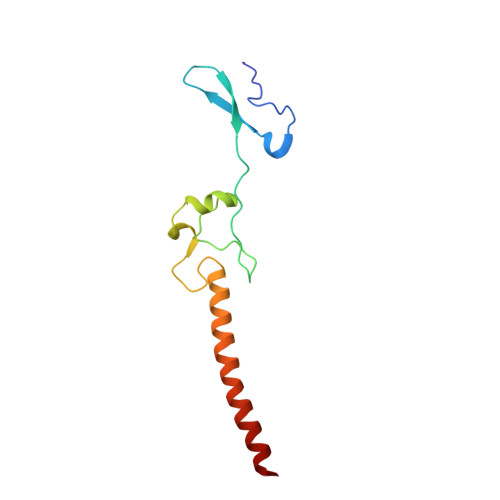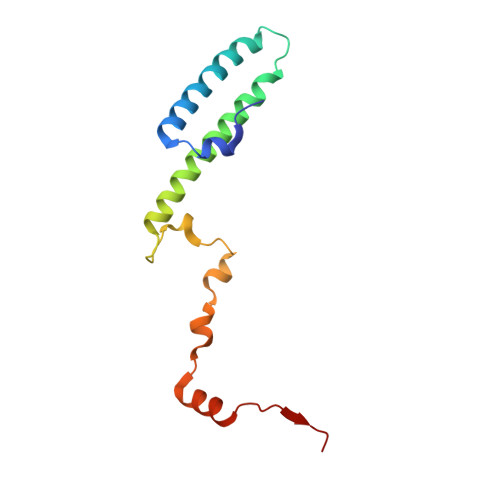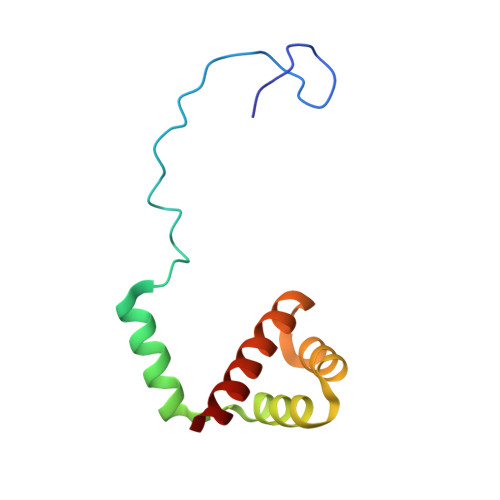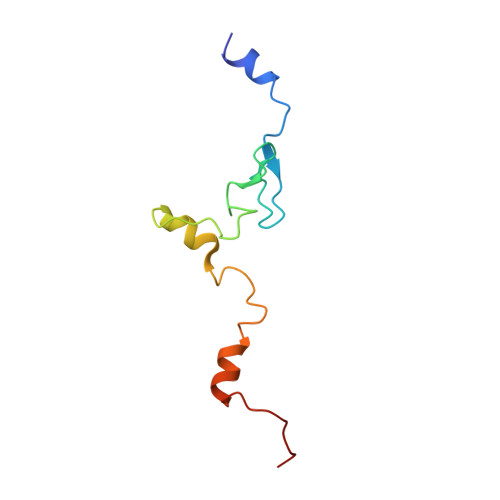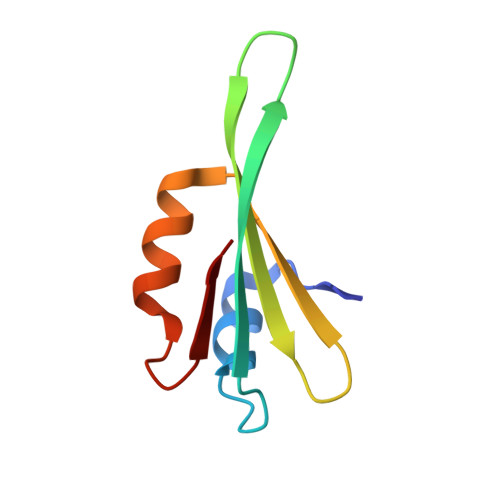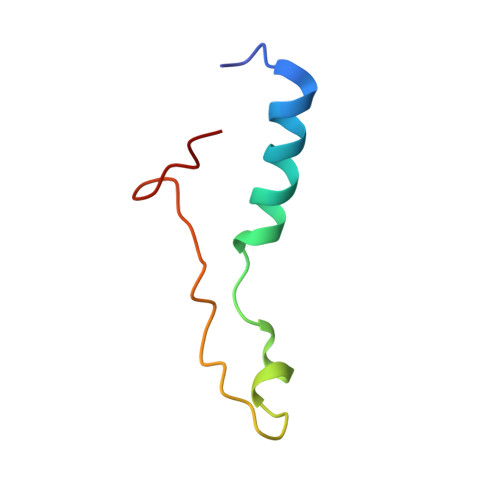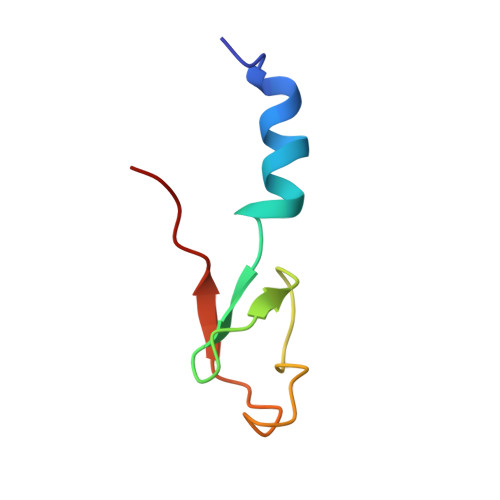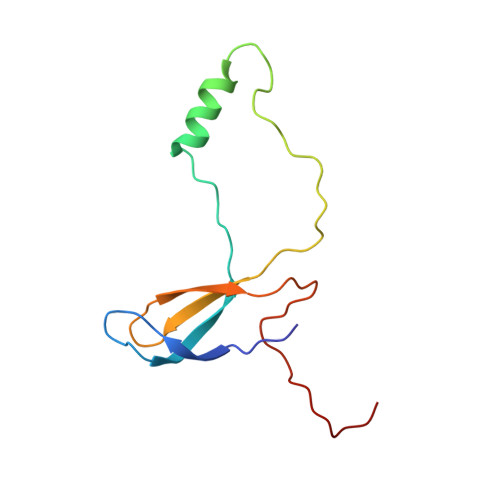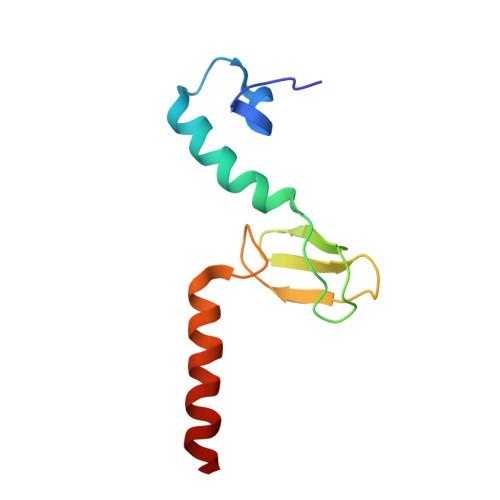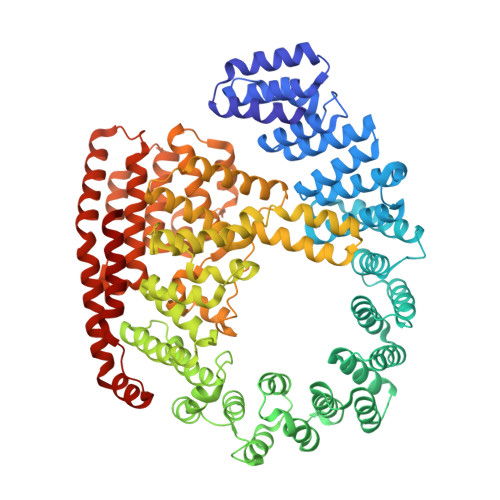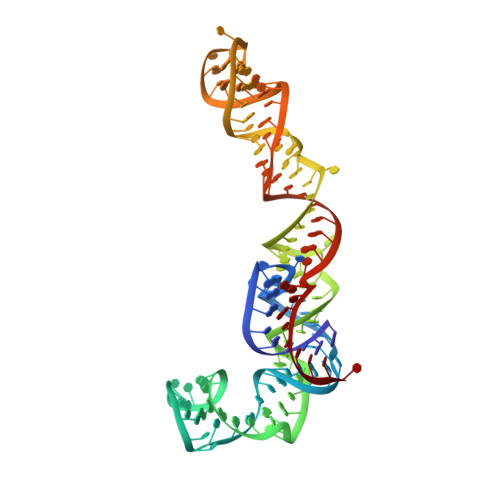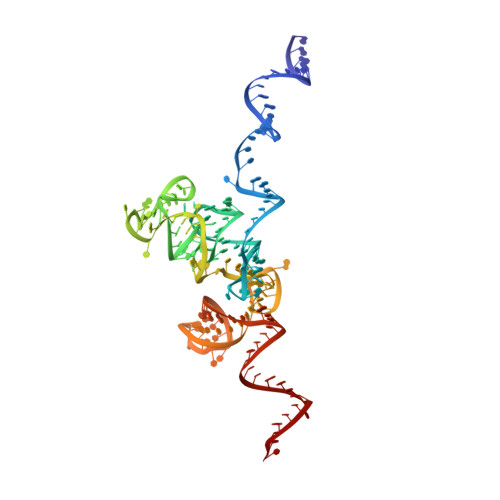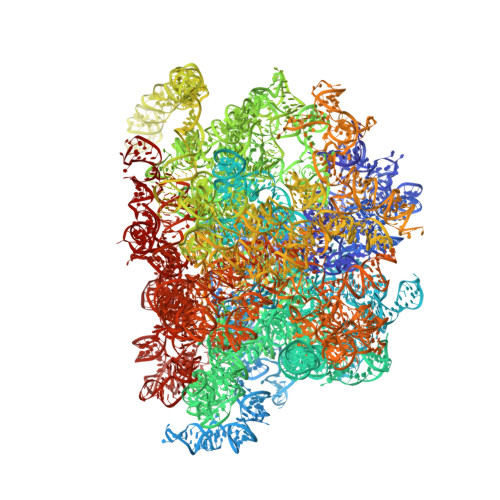The dynamic architecture of Map1- and NatB-ribosome complexes coordinates the sequential modifications of nascent polypeptide chains.
Knorr, A.G., Mackens-Kiani, T., Musial, J., Berninghausen, O., Becker, T., Beatrix, B., Beckmann, R.(2023) PLoS Biol 21: e3001995-e3001995
- PubMed: 37079644
- DOI: https://doi.org/10.1371/journal.pbio.3001995
- Primary Citation of Related Structures:
8BIP, 8BJQ, 8BQD, 8BQX - PubMed Abstract:
Cotranslational modification of the nascent polypeptide chain is one of the first events during the birth of a new protein. In eukaryotes, methionine aminopeptidases (MetAPs) cleave off the starter methionine, whereas N-acetyl-transferases (NATs) catalyze N-terminal acetylation. MetAPs and NATs compete with other cotranslationally acting chaperones, such as ribosome-associated complex (RAC), protein targeting and translocation factors (SRP and Sec61) for binding sites at the ribosomal tunnel exit. Yet, whereas well-resolved structures for ribosome-bound RAC, SRP and Sec61, are available, structural information on the mode of ribosome interaction of eukaryotic MetAPs or of the five cotranslationally active NATs is only available for NatA. Here, we present cryo-EM structures of yeast Map1 and NatB bound to ribosome-nascent chain complexes. Map1 is mainly associated with the dynamic rRNA expansion segment ES27a, thereby kept at an ideal position below the tunnel exit to act on the emerging substrate nascent chain. For NatB, we observe two copies of the NatB complex. NatB-1 binds directly below the tunnel exit, again involving ES27a, and NatB-2 is located below the second universal adapter site (eL31 and uL22). The binding mode of the two NatB complexes on the ribosome differs but overlaps with that of NatA and Map1, implying that NatB binds exclusively to the tunnel exit. We further observe that ES27a adopts distinct conformations when bound to NatA, NatB, or Map1, together suggesting a contribution to the coordination of a sequential activity of these factors on the emerging nascent chain at the ribosomal exit tunnel.
Organizational Affiliation:
Department of Biochemistry, Gene Center, Ludwig-Maximilians University Munich, University of Munich, Munich, Germany.








